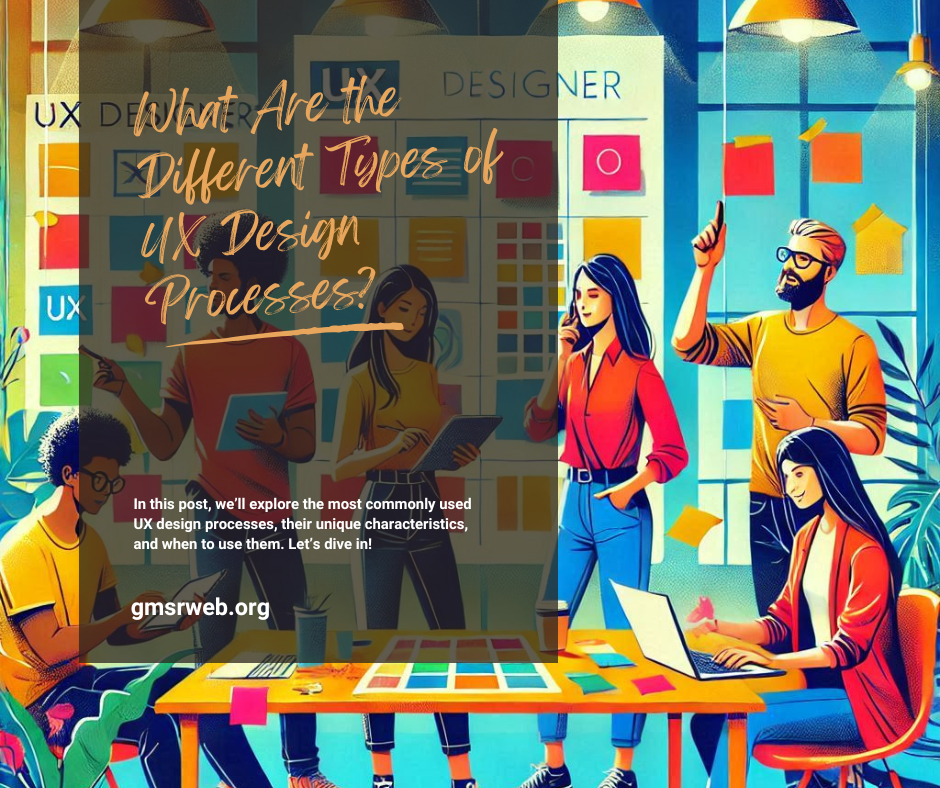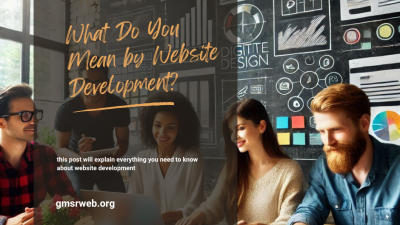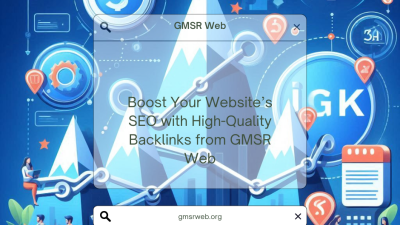User Experience (UX) design is at the heart of creating products that feel intuitive and solve real-world problems. Whether it’s a sleek mobile app or a complex web platform, the UX design process provides a framework for shaping experiences that delight users. But here’s the thing—not every project requires the same approach. That’s where the different types of UX design processes come in. Each one has its own strengths, suited to different team dynamics, timelines, and challenges.
In this post, we’ll explore the most commonly used UX design processes, their unique characteristics, and when to use them. Let’s dive in!

What Is a UX Design Process?
Before breaking down the types, let’s first clarify what a UX design process actually is. In essence, it’s a series of steps that UX designers follow to take a project from an initial idea to a polished, user-friendly product. The process typically involves research, ideation, prototyping, testing, and iteration, with the end goal of meeting user needs effectively. Think of it as the recipe for creating delightful and functional experiences.
However, not all design processes are created equal. The way you approach UX design can vary depending on factors like the project’s complexity, the team’s goals, and the user base. That’s why it’s helpful to understand the different methodologies out there.
The Different Types of UX Design Processes
Here’s a breakdown of the most common UX design processes, along with what makes each one unique.
1. User-Centered Design (UCD)
User-Centered Design (UCD) is one of the most foundational processes in UX design. As the name suggests, it’s all about keeping the user at the center of every decision. Designers rely on thorough user research to identify pain points, needs, and preferences. This insight shapes the entire design journey.
How It Works:
UCD follows a cyclical process of research, design, testing, and iteration. Let’s say you’re working on an e-learning app. With UCD, you’d first interview educators and students to understand their challenges, then create designs based on those insights. After building prototypes, you’d test them with users to refine the experience until it meets their expectations.
When to Use It:
UCD is perfect when you’re designing for a specific user base with clear goals. It’s particularly effective for apps, websites, or tools where usability is a top priority.
2. Design Thinking
Design Thinking is another widely used approach. It’s not just a UX process—it’s a mindset for solving complex problems creatively. This process emphasizes empathy, collaboration, and iteration.
How It Works:
Design Thinking typically involves five key stages:
- Empathize: Understand the user’s challenges and needs.
- Define: Pinpoint the core problem to address.
- Ideate: Brainstorm solutions with your team.
- Prototype: Create low-fidelity prototypes to test your ideas.
- Test: Gather feedback and refine your solutions.
For example, if you’re designing a ridesharing app, you’d start by empathizing with both drivers and passengers, identifying pain points like long wait times. Then, you’d ideate and prototype solutions, such as optimizing route algorithms.
When to Use It:
Design Thinking is ideal for tackling complex, open-ended challenges where creativity and collaboration are essential.
3. Lean UX
Lean UX is a fast and lightweight approach designed for agile teams. It focuses on delivering value to users quickly while minimizing waste. Instead of waiting to perfect a product before testing it, Lean UX encourages frequent iterations based on real user feedback.
How It Works:
Lean UX breaks the process into small, manageable experiments. For example, if you’re redesigning an e-commerce checkout flow, you might start with a hypothesis: “Simplifying the checkout form will reduce cart abandonment rates.” Then, you’d design a quick prototype, test it with users, and make changes based on what you learn.
Key Principles:
- Collaborate across teams to keep the process efficient.
- Build only what’s necessary to test your assumptions.
- Use user feedback as the foundation for improvements.
When to Use It:
Lean UX is perfect for startups or teams working on tight deadlines. It works especially well in fast-paced environments where products evolve rapidly.
4. Agile UX
Agile UX is a process that combines UX design with the Agile development methodology. It focuses on close collaboration between designers and developers, ensuring that user feedback is incorporated throughout the development process.
How It Works:
In Agile UX, teams work in short development cycles called sprints. Each sprint focuses on delivering a specific feature or improvement. Designers create just-in-time prototypes or mockups, which are tested and refined in real-time alongside development.
For instance, imagine you’re building a fitness tracker app. In one sprint, you might focus on the onboarding experience, testing it with a small group of users while developers work on the backend features.
When to Use It:
Agile UX is best suited for teams that work in iterative environments, such as software development companies. It’s particularly useful for projects that require continuous updates.
5. The Double Diamond Process
The Double Diamond process, created by the Design Council, is a structured approach to UX design that focuses on problem-solving. It’s called the “Double Diamond” because it divides the process into two phases: understanding the problem and creating the solution.
How It Works:
- Phase 1: Discover and Define: The first diamond focuses on understanding the problem. Designers conduct research, interviews, and analysis to uncover the root issue.
- Phase 2: Develop and Deliver: The second diamond shifts to solution development. Designers ideate, prototype, and refine their ideas until they land on the best possible outcome.
For example, if you’re working on a government service website, you’d first discover why users struggle with finding information. Then, you’d define the specific problem (e.g., poor navigation), develop solutions, and deliver a more intuitive interface.
When to Use It:
The Double Diamond process is ideal for projects that require a deep understanding of the problem before jumping into solutions.
6. Conversion-Centered Design (CCD)
Conversion-Centered Design focuses on creating designs that drive specific user actions, such as signing up for a newsletter, making a purchase, or downloading an app.
How It Works:
CCD relies heavily on data and testing to optimize key user flows. For example, if you’re designing a landing page, you’d test different headlines, layouts, and calls-to-action to find the combination that leads to the highest conversions.
When to Use It:
CCD is perfect for marketing-focused projects, such as landing pages or email campaigns, where the primary goal is to drive measurable results.
Choosing the Right UX Design Process
Now that you know the different types of UX design processes, how do you choose the right one for your project? Here are a few factors to consider:
- Project Goals: If you’re solving a complex problem, Design Thinking might be the best fit. For quick iterations, Lean UX or Agile UX could work better.
- Team Structure: Large teams may benefit from the structured approach of the Double Diamond process, while smaller teams might prefer the flexibility of Lean UX.
- Timeline: If time is limited, Lean UX offers a faster path to testing and iteration.
- User Needs: For user-focused projects, UCD should be your go-to process.
Conclusion
The UX design process you choose can make or break your project’s success. Each process has its own strengths and use cases, from the user-focused nature of UCD to the fast-paced flexibility of Lean UX. By understanding these different methodologies, you can tailor your approach to fit the unique needs of your team, project, and users.
Remember, no matter which process you choose, the key is to stay user-focused, collaborative, and open to iteration. After all, great design is a journey—and the right process will help you get there.


